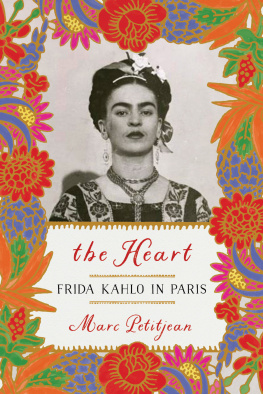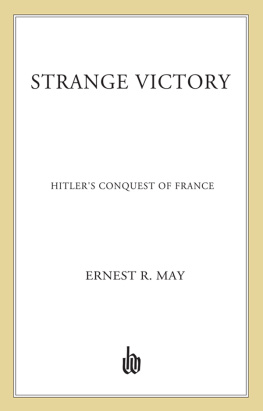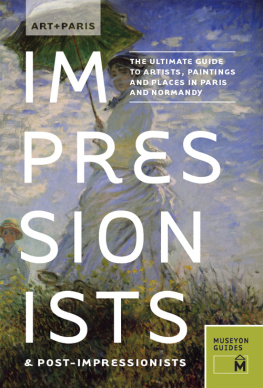Routledge Revivals
The Ile-de-France
First published in English in 1971, The Ile-de-France presents the reader with a study of the countryside around Paris through the eyes of Marc Bloch, a man with his own view of history. It looks at the areas origins, extent, geographical features, archaeology, and past local histories.
The book extends beyond Paris itself and offers the reader a masterful demonstration of the methodology of such enquiries and their purpose within the wider context of historical research. The work is particularly valuable in that it covers a wide variety of subjects and makes extensive use of archives and original documents.
First published in 1971
by Routledge & Kegan Paul Ltd
This edition first published in 2015 by Routledge
2 Park Square, Milton Park, Abingdon, Oxon, OX14 4RN
and by Routledge
711 Third Avenue, New York, NY 10017
Routledge is an imprint of the Taylor & Francis Group, an informa business
1966 cole Pratique des Hautes tudes
This translation 1971 Routledge & Kegan Paul Ltd
The right of Marc Bloch to be identified as author of this work has been asserted by him in accordance with sections 77 and 78 of the Copyright, Designs and Patents Act 1988.
All rights reserved. No part of this book may be reprinted or reproduced or utilised in any form or by any electronic, mechanical, or other means, now known or hereafter invented, including photocopying and recording, or in any information storage or retrieval system, without permission in writing from the publishers.
Publishers Note
The publisher has gone to great lengths to ensure the quality of this reprint but points out that some imperfections in the original copies may be apparent.
Disclaimer
The publisher has made every effort to trace copyright holders and welcomes correspondence from those they have been unable to contact.
A Library of Congress record exists under LC control number: 70596246
ISBN 13: 978-1-138-85518-2 (hbk)
ISBN 13: 978-1-315-71999-3 (ebk)
Translated from the French
LIle-de-France, 1913
Republished in Mlanges Historiques 1966 (S.E.V.P.E.N.)
First published in English in 1971
by Routledge & Kegan Paul Ltd
Broadway House, 6874 Carter Lane
London E.C.4
1966 by cole Pratique des Hautes tudes
This translationRoutledge & Kegan Paul Ltd 1971
Printed in Great Britain by
Western Printing Services Ltd, Bristol
No part of this book may be reproduced
in any form without permission from
the publisher, except for the quotation
of brief passages in criticism
ISBN 0 7100 6791 7
Contents
Map of the whole region of the Ile-de-France
Acknowledgments
The illustrations facing pages 24, 40, 88, 89 and 104 are reproduced by courtesy of the Commissariat Gnral au Tourisme Paris. Those facing pages 25 and 105 are reproduced by courtesy of Dr Martin Hrliman.
When you come to think of it, the name of the region we are about to studythe Ile-de-Francehas something surprising and intriguing about it. Why should a single province bear the same name as the great country of which it is only a part? And in particular, what is the origin of this word lie, which would appear to be so unsuitable for a region that is not surrounded by any sea? The origins and vicissitudes of the names France and Ile-de-France, in spite of some fine work that has been done on them, are still not at all familiar; the problem we encounter on the threshold of this general review is one that has been very inadequately solved, and still requires research. What follows would appear to be the more or less certain facts about the complicated history of these famous names.
FranceFranciais the country of the Franks. The Frankish people and the Frankish dynasties brought this name with them in the course of their migrations and conquests, across western Europe. At the beginning of the ninth century, at the time of the Carolingian Empire, the domain covered by the name France was enormous. At that period the name was applied to that whole part of the Empire stretching to the north of the Alps.especially the two most durable ones, amongst those which were formed out of its ruins: the kingdom of Charles the Bald and his descendants, and the one whose first sovereign was Louis the German. They were customarily distinguished from one another by the terms western France and eastern France. But eastern France soon came under the dominion of a new dynasty no longer Frankish, but Saxon; and it gradually lost the name of France. Western France however kept it, and was the only region to keep it, becoming in fact the kingdom of France.
Such in rapid summary is what may be called in the widest sense the history of France. But alongside this broadest sense the word has always also had a more restricted meaningthat is, a more local one. It has always designated the region at the centre of the country subject to the Frankish kings; the region that appeared to be the most Frankish in character. Gregory of Tours, for example, applies it sometimes to northern Gaul, as opposed to the Auvergne, which had been only recently conquered and was often in revolt;
It is a well-known fact that the geographical vocabulary of the high Middle Ages, especially during the two centuries following the dismemberment of the Carolingian Empire, was extremely fluid and imprecise; and no wonder, for it was a faithful reflection of a society that was constantly in flux, and which did not succeed until quite late in the day in finding any lasting territorial framework. The name of France, like that of Burgundy and Lorraine, for example, was involved in this general uncertainty about all geographical terms. When the king And it no doubt seemed quite natural to continue calling this district, from which the kings of France drew most of their power, by the same name as the kingdom as a whole.
Here are some examples of this use of the word France in the early days of the Capetian dynasty. The abbey of Saint-Benot-de-Fleury rose above the banks of the Loire about thirty kilometres upstream from Orlans. In a little treatise on the relics of Saint Benedict composed between ion and 1019, a German monk, Thierri dAmorbach, wrote as he followed the fortunes of this abbey where he It is clear then that France in the days of the early Capetians extended all round Paris, on both banks of the Seine.
The France of which the administrative documents in the time of Saint Louis and Philip le Bel make so much, was far more extensive. The fact is that within the space of a century the dynastys territorial power had developed to a remarkable extent. For example, in the account of the bailliages of France, drawn up on All Saints Day 1285,districts grouped together in administrative language under the name of France. The France of the administrative documents was the ancient royal demesne, only enlarged in size.
At the same period legal language gave the name of France a quite different and much more restricted meaning Ad usus et consuetudines Francie, aus us et coutumes de France
What were the boundaries of this France as the lawyers delimited it? It would no doubt be possible to discover them with some degree of accuracy, for many of the documents dealing with real estate in the thirteenth and fourteenth centuries in the Paris region have been preserved. By collecting all these passages and noting all the references to the custom of France and the customs of neighbouring regions one could compile a legal map of the Paris region covering the period in question. It would then be interesting to compare those data for the thirteenth and fourteenth centuries with the lists of places governed by the custom of Paris drawn up after the custom had been codified.facts I have just adduced, have perhaps paid too exclusive attention) tended to reject the name of France for land on the right bank of the river.










